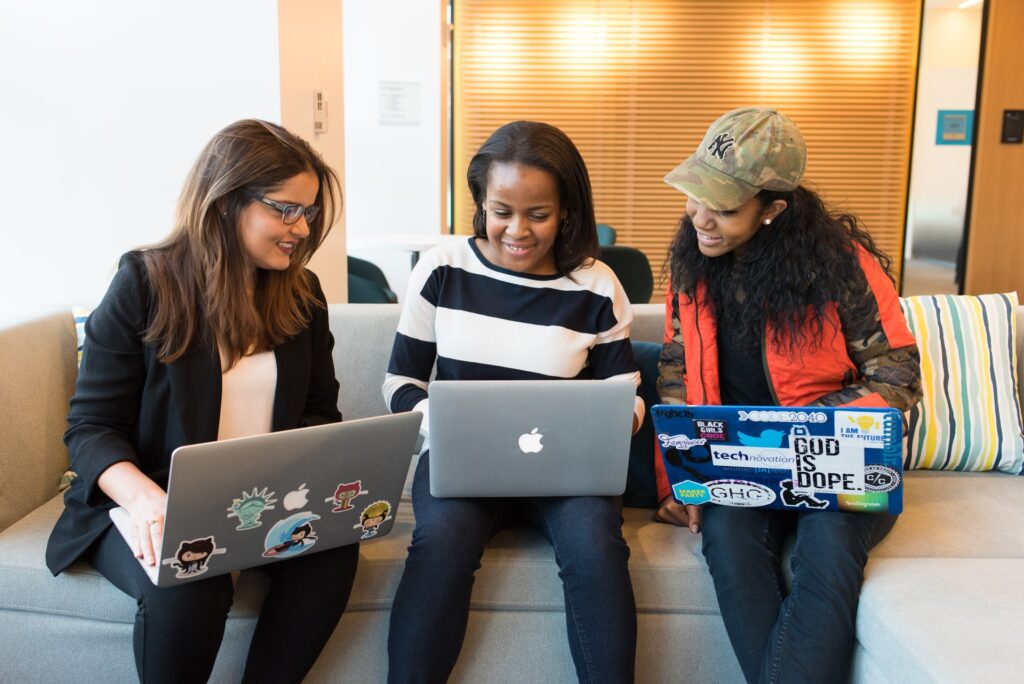A study published by the University of Washington and the University of California San Diego tested the science behind social learning and the theory that humans learn exponentially better from other human beings than from machines. The study found that steadily increasing a robot’s social behaviors simultaneously increased the student’s willingness to learn. If this is related to the world of online learning platforms (LMS), we can confirm that they enhance the acquisition of knowledge of any subject, complementing social and group learning. So came the birth of the idea for the social LMS.
In the words of the great Benjamin Franklin, “Tell me and I forget. Teach me and I remember. Involve me and I learn.”
Social learning, also called informal learning, was theorized by the famous psychologist, Albert Bandura, and labeled learning as a cognitive process that should take place in a social environment where people cooperate with one another to fuel the learning process. His whole belief rested on the idea that humans beings learn in social, interactive environments that keep them engaged in the material.
As a result of this social learning theory, online training software companies like CAE Innovative Learning Solutions are adapting a social learning atmosphere into their platforms and created Social LMS; moving e-learning and training from an old, traditional, and outdated method of learning to an interactive, collaborative platform focused on increasing learner engagement and knowledge retention. Traditionally, before social LMS was implemented, online learning software and LMS was a one-way street where the student was presented learning materials and practice exercises without any social interaction ever taking place. In contrast, LMS with social learning integration is a two–way street that stimulates student engagement and interaction amongst each other in an organic, fluid fashion.
So what are the key features of Social LMS?
Social learning built into LMS make up Social LMS platforms and usually consist of the following types of tools and functionalities:
#1. Discussions and Community
Social LMSs are now teacher–student enablement communities that reinforce networking in the learning environment. Here, students and teachers can build an educational support group to exchange ideas, talk about difficult lessons, and connect on a personal level with like–minded peers in the same course or around the world. Collaborative learning then happens naturally as trainees discuss topics, exercises, and share ideas amongst each other.
#2. A social LMS makes communication easier
Social learning management systems with features like comments and ratings enable posters to question, clarify, and elaborate on important issues regarding the trainings. Students feel more comfortable asking and answering questions as well as voicing opinions when they are in an online environment.
Ratings also allow people to rate the value of the course content and course administrators can use this feedback to release course and software updates that make the Social LMS experience run more smoothly.
# 3 Online exercises and periodic evaluations
Social LMS are a tool that makes it easier for students to learn from others, to reflect on the material learned, the exercises performed and the training evaluations. Teachers can enrich learning by assigning individual or group directed activities that help in the training of students.
#4. Virtual Classrooms and live online classes
Arguably the most important tool available in most social LMS, the virtual classroom opens the door to endless learning possibilities by giving classroom access to anyone, anywhere in the world via the internet. Some people are visual learners and they need a real person to explain a concept to them as opposed to reading it from a computer screen. Instructors can offer live classes that will also be recorded and can be replayed by the trainee as many times as they need, enabling him or her to retain the material at their own comfortable pace. It should be noted that our virtual classroom has the ability to integrate into the platform (LMS) Zoom rooms, Google Meet and MS Teams, to hold video conferences using these systems easily.
#5. Applications and Document Sharing
The flow of information between people is one of the most effective ways to share and acquire knowledge. Thus, when online training software supports document sharing and transfers among users, they learn from one another at the same time as they are learning from the course. Learners can share essential information and documents that may not elsewhere be available to the public and increase the wealth of knowledge.
Collaborative teams achieve greater success in training and social LMS is the foundation for such success. Coursework is important but can be monotonous and tedious if not supplemented with some degree of social learning. Social learning does wonderful things for learners – it opens the door for educated topical discussions, creates learner-generated content, and engages users in a support group of information that guides trainees to learning awareness, comprehension, and understanding that would otherwise not be possible in a traditional online or in-person classroom setting.
Click to find out more about social learning through CAE’s LMS fully integrated with SCORM course compatibility, student community, and virtual classroom all under one platform, providing a unique learning virtual environment.


